An arrangement of spring , strings, pulley and masses is shown in the figure . the pulley and the String are massless and M>m . the spring is light with spring constant k. If the string Connecting m to the ground detached , then immediately after detachment

the magnitude of te acceleration of is zero and of M is
the magnitude of the acceleration of m is (M−m)g/m and that of M is zero
the accelerations of both masses are same
the elongation in the spring is (M−m)g/k
The correct Answer is:B
Step by step video, text & image solution for An arrangement of spring , strings, pulley and masses is shown in the figure . the pulley and the String are massless and Mgtm . the spring is light with spring constant k. If the string Connecting m to the ground detached , then immediately after detachment by Physics experts to help you in doubts & scoring excellent marks in Class 12 exams.
Updated on:21/07/2023Topper's Solved these Questions
Similar Questions
A wide bottom cylindrical massless plastic container of height 9 cm has 40 identical coins inside it and is floating on water with 3 cm inside the water. If we start putting more of such coins on its lid. It is observed that after N coins are put, its equilibrium changes from stable to unstable. Equilibrium in floating is stable if the geometric center of the submerged portion is above the center of mass of the object) The value of N is closed to
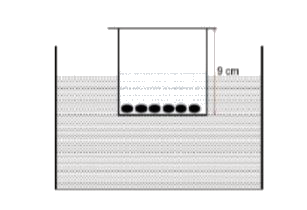
View SolutionThe string, spring and the pulley shown in figure are light. Find the time period of the mass m.
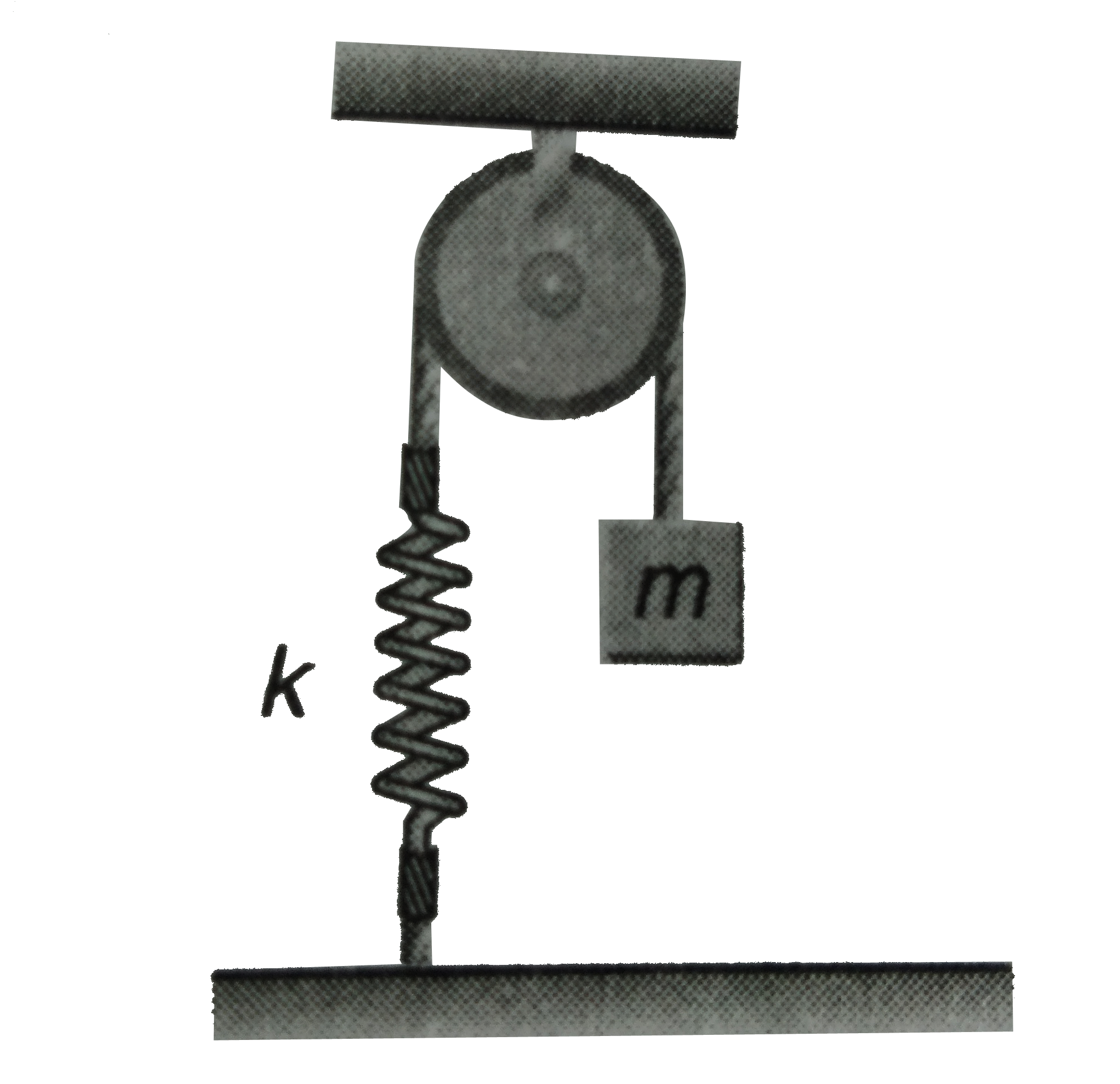
View SolutionTwo block A and B of masses 3m and m respectively are connected by a massless and nextensible string. The whole system is suspended by a massless spring as shown in figure. The magnitudes of acceleration of A and B immediately after the string is cut, are resectively
View SolutionIn the arrangement shown, the pulleys, string and the spring balance, all the ideal. If m_(1) gt m_(2) , then the reading of the spring balance is
View SolutionThe string, the spring and the pulley shown in figure are light. Find the time period of the mass m.
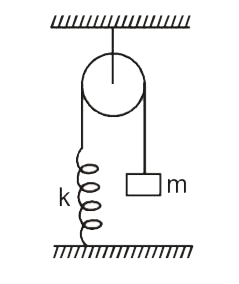
View SolutionThe system shown in the following figure is in equilibrium and at rest. The spring and string are massless. Now, the string is cut. The acceleration of mass 2m and m, just after the string is cut, will be
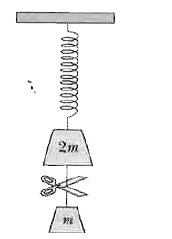
View SolutionIn the given fig, pulley is frictionless and massless. Both the springs are having same force constant 10 N/m. Initially with the string attached to the ground, the total system is at rest. Now if the string is cut, then immediately after cutting the string,
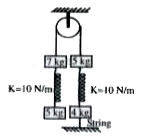
View SolutionIn the two systems shown, all strings springs and pulleys are ideal. In figure-1 and figure 2 both the Springs are of same spring constant (k)
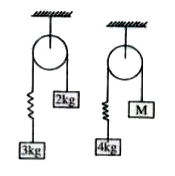
View SolutionTwo blocks A and B of masses 2m and respectively, are connected by a massless and inextensible string. The whole system is suspended by a masslessspring as shown in the figure. The magnitude of acceleration of A and B, immediately after the string is cut, are respectively
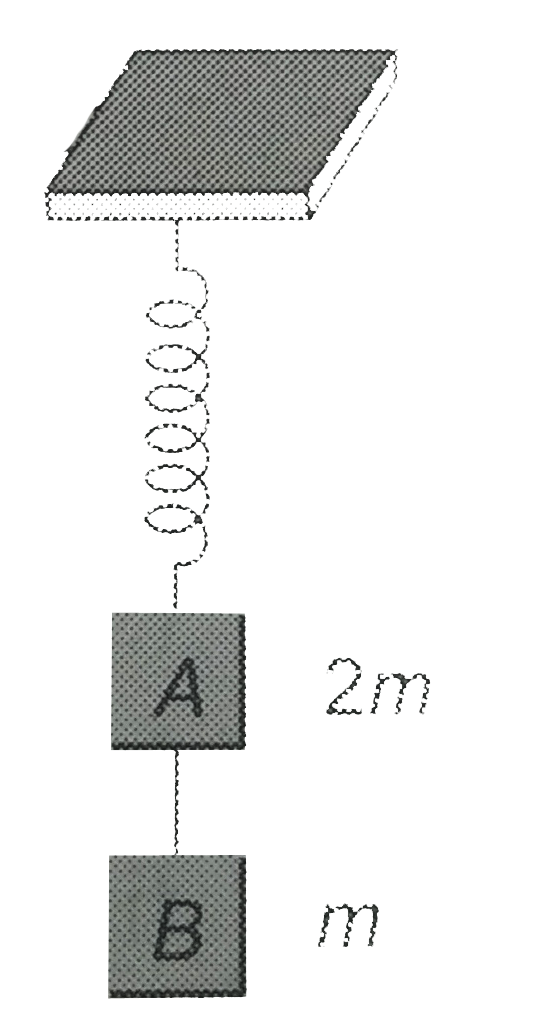
View SolutionThe string , the spring and the pulley shown in the figure are light . Find the time period of the mass m

View SolutionTwo blocks A and B of masses 3m and m respectively are connected by a massless and inextensible string. The whole system is suspended by a massless spring as shown in figure. The magnitudes of acceleration of A and B immediately after the string is cut, are respectively
View SolutionThe string, spring and the pulley shown in figure are light. Find the time period of the mass m.

View SolutionTwo block A and B of masses 3m and m respectively are connected by a massless and inextensible string. The whole system is suspended by a massless spring as shown in figure. The magnitudes of acceleration of A and B immediately after the string is cut, are resectively
View SolutionA block of mass 20 kg is hung with the help of ideal string, pulleys and spring (Spring constant k = 1000 N/m) as shown in figure. If block is in equilibrium position then extension in the spring will be (g = 10 ms^-2)
View SolutionIn the arrangement shown, the pulleys, string and the spring balance, all the ideal. If m_(1) gt m_(2) , then the reading of the spring balance is
View Solution

